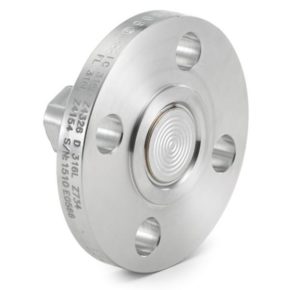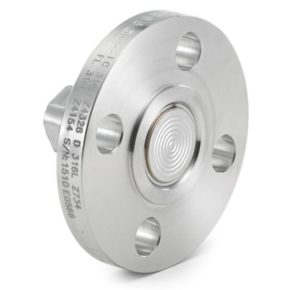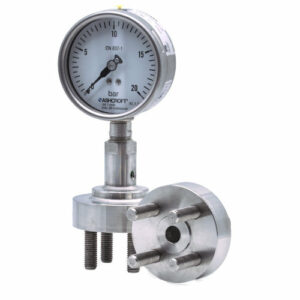

DT-ASME Truncated Flanged Diaphragm Seal
DT-ASME Truncated Flanged Diaphragm Seal
Data Sheets
Installation + Maintenance
Declaration of Conformity
Product + Technical Information
Safety Data Sheets
Key Features
Flush-mounted diaphragm prevents clogging of process media
NACE compliant assemblies
Designed for flush mounting in insulated pipes and tanks
Rupture protected due to embedded convolution behind the diaphragm
Selection of wetted materials
Material certificates to EN 10204:2004 3.1
Markets & Applications
Chemical and Petrochemical
Energy
Biogas and Biodiesel
Oil and Gas
Refinery
NACE Compliant Processes (Sour Gas Separation)
Machine Automation
Pumps and Compressors
- Specifications
- Downloads
Instrument Connection Style
Welded
Threaded
Wetted Parts Material
PTFE coated
Stainless steel 316L (1.4404)
Tantalum
Hastelloy C
Case or Body Material
Stainless steel 316L (1.4404)
Pressure Rating
150 ... 1500 lbs.
Process Connection Style
Flange according to ASME B16.5
Process Connection Size
2" ... 4"
Accuracy
Added Tolerance ±0.5% typical
Data Sheets
Installation + Maintenance
Declaration of Conformity
Product + Technical Information
Safety Data Sheets
- Category: Flanged Seals














